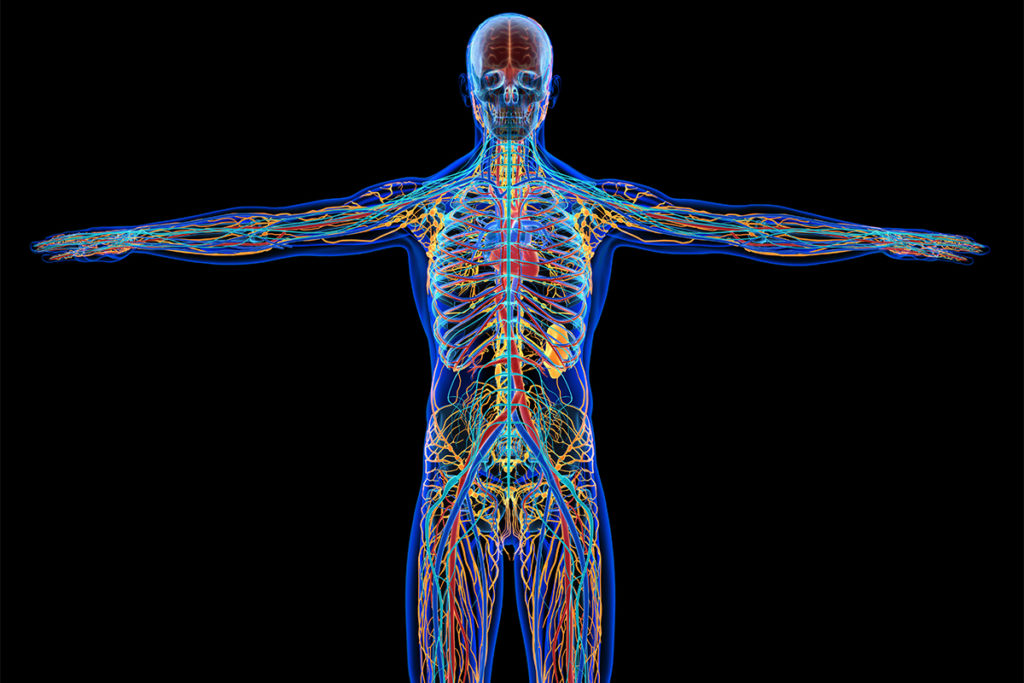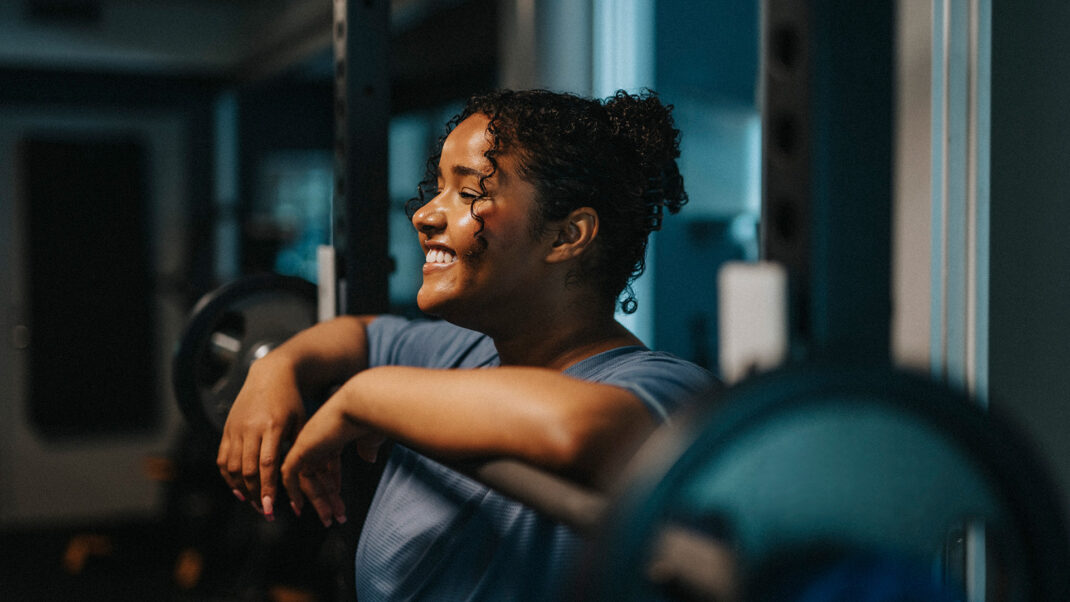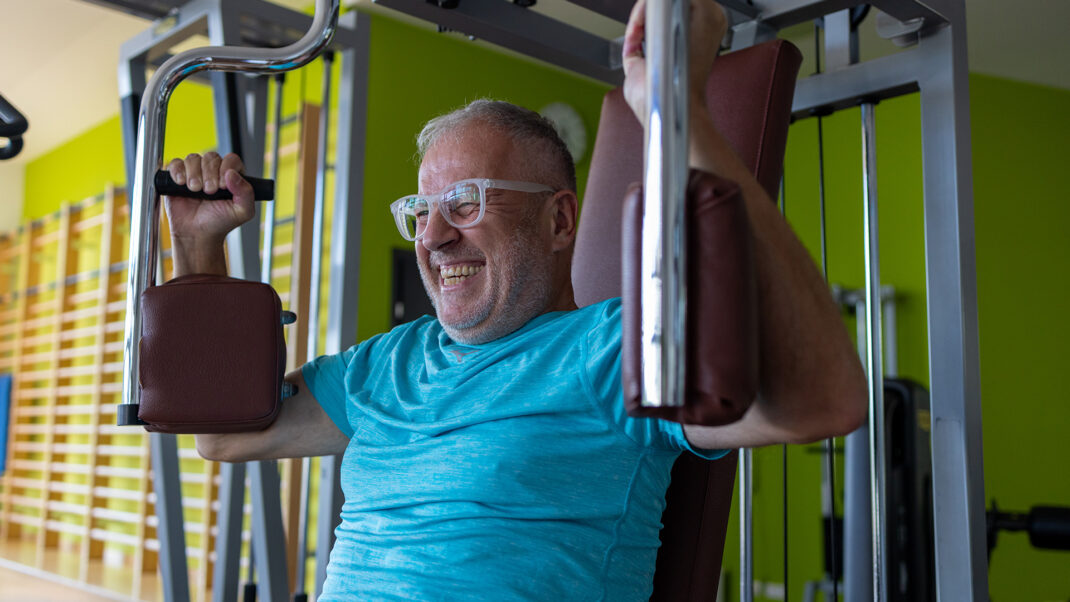How Exercise Helps Inflammation

Regular exercise helps inflammation as an effective protector and treatment against chronic diseases associated with chronic low-grade inflammation.
Skeletal muscle is the largest organ in the human body (Pedersen 2007). Muscle contractions from exercise increase the release of a specific type of cytokines, called myokines. The initial and primary cytokine associated with exercise is interleukin-6, which increases exponentially as a response to exercise (Mathur & Pedersen 2008).
With exercise, IL-6 acts as an energy sensor and begins to boost its production, potentially rising as much as a hundredfold compared with resting levels (Mathur & Pedersen 2008). The degree to which exercise raises circulating levels of IL-6 in the whole body correlates directly to the intensity, duration and amount of muscle mass recruited to perform the exercise (Pedersen 2007; Lee & Jun 2019).
Lee & Jun explain that IL-6 also stimulates glucose update and fatty-acid oxidation. Plus, the increase in IL-6 with exercise stimulates the use of fat as a fuel source for energy. The rise in IL-6 inhibits TNF-a production and ignites the release of anti-inflammatory cytokines into circulation (Pedersen 2007). Therefore, the rise in IL-6 caused by exercise may help counteract the role TNF-a plays in vascular inflammation, insulin resistance and type 2 diabetes (Pedersen 2007).
See also: The Food-Inflammation Connection
Aerobic Exercise
Nieman (2003) states that the most important finding that has emerged from exercise immunology research is that positive immune changes occur during each bout of moderate physical activity. He notes that this translates to fewer days of sickness with the common cold and other upper-respiratory-tract infections. When researchers compared the effects of low- versus moderate-intensity exercise, they found that moderate intensity was more successful in managing low-grade inflammation (Krause et al. 2014).
A study of male and female patients with stable coronary heart disease showed that aerobic exercise helps inflammation through a variety of modalities. For instance, researchers have found moderate-intensity aerobic exercise performed for 45 minutes 3 days a week for 12 weeks, on equipment such as a treadmill, stationary bike, arm bicycle, rowing machine or combination of these options, was effective at reducing basal levels of several pro-inflammatory proteins as well as increasing an anti-inflammatory cytokine (Goldhammer et al. 2005).
For previously sedentary individuals, the intensity of aerobic exercise can gradually progress from low to moderate over the course of months and can have a similar, very positive effect on low-grade inflammation (Kohut et al. 2006).
Higher-intensity exercise for a sustained period of time is not encouraged for immune system health. The literature shows that many components of the immune system show adverse change after prolonged, heavy exercise lasting longer than 90 minutes (Nieman 2003).
In regard to decreasing the production of free radicals and oxidative stress and increasing the levels of antioxidants (which neutralize free radicals), the evidence shows that for elderly individuals, endurance exercise at 50%–80% of VO2max on 2–3 days per week is optimal (Liguori et al. 2018).
Resistance Exercise
As an essential component of fitness, resistance training provides health-related benefits such as improvements in the metabolic profile of people with type 2 diabetes, increased muscle mass for slowed progression of sarcopenia, increased bone mineral density for prevention of osteoporosis and overall improvements in body composition (Calle & Fernandez 2010).
Resistance training consists of three muscle contractions: eccentric, isometric and concentric. The eccentric, or lengthening, phase often induces the greatest muscle damage. This tissue injury triggers an inflammatory response that stimulates the release of cytokines. From the cascade of white blood cells reaching the damaged tissue, free radicals are produced, causing further tissue damage and synthesis of more cytokines (Calle & Fernandez 2010). This can lead to muscle soreness and swelling but also, eventually, to tissue repair and remodeling (Calle & Fernandez 2010; Izquierdo et al. 2009). Additionally, the IL-6 produced by growing muscle fibers acts as a regulator for satellite cell–mediated muscle hypertrophy (Izquierdo et al. 2009).
Resistance exercise programming (intensity, volume and rest intervals) also influences the inflammatory response. A single bout raises the number of cytokines; however, adaptations from long-term training elicit a decrease in cytokines and a shift to an anti-inflammatory response (Calle & Fernandez 2010).
In most studies that have examined how resistance training helps inflammation, subjects have been older men and women. Liguori et al. summarize that resistance training improves antioxidant defenses, helping to neutralize free radicals and oxidative stress, in the elderly population.
This positive effect can be achieved when training protocols use moderate-intensity workloads and provide a sufficient volume of exercise (number of exercises, frequency and duration of intervention) for each muscle group (3–5 sets, 10 repetitions). Sardeli et al. (2018) concur that higher-volume workouts with moderate-intensity resistance training protocols appear to play a positive role in its anti-inflammatory effects.
See also: Inflammation: Obesity, Diabetes, Aging and Exercise

References
Calle, M.C., & Fernandez, M.L. 2010. Effects of resistance training on the inflammatory response. Nutrition Research and Practice, 4 (4), 259–69.
Goldhammer, E., et al. 2005. Exercise training modulates cytokines activity in coronary heart disease patients. International Journal of Cardiology, 100 (1), 93–99.
Izquierdo, M., et al. 2009. Cytokine and hormone responses to resistance training. European Journal of Applied Physiology, 107 (4), 397–409.
Kohut, M.L., et al. 2006. Aerobic exercise, but not flexibility/resistance exercise, reduces serum IL-18, CRP, and IL-6 independent of b-blockers, BMI, and psychosocial factors in older adults. Brain, Behavior, and Immunity, 20 (3), 201–9.
Krause, M., et al. 2014. The effects of aerobic exercise training at two different intensities in obesity and type 2 diabetes: Implications for oxidative stress, low-grade inflammation and nitric oxide production. European Journal of Applied Physiology, 114 (2), 251–60.
Liguori, I., et al. 2018. Oxidative stress, aging, and disease. Clinical Interventions in Aging, 13, 757–72.
Mathur, N., & Pedersen, B.K. 2008. Exercise as a mean to control low-grade systemic inflammation. Mediators of Inflammation, doi:10.1155/2008/109502.
Nieman, D.C., 2003. Current perspective on exercise immunology. Current Sports Medicine Reports, 2 (5), 239–42.
Pedersen, B.K. 2007. State of the art reviews: Health benefits related to exercise in patients with chronic low-grade systemic inflammation. American Journal of Lifestyle Medicine, 1 (4), 289–98.
Sardeli, A.V., et al. 2018. Effect of resistance training on inflammatory markers of older adults: A meta-analysis. Experimental Gerontology, 111, 188–96.
Len Kravitz, PhD
Len Kravitz, PhD is a professor and program coordinator of exercise science at the University of New Mexico where he recently received the Presidential Award of Distinction and the Outstanding Teacher of the Year award. In addition to being a 2016 inductee into the National Fitness Hall of Fame, Dr. Kravitz was awarded the Fitness Educator of the Year by the American Council on Exercise. Just recently, ACSM honored him with writing the 'Paper of the Year' for the ACSM Health and Fitness Journal.
Gabriella Bellissimo, MA
Gabriella Bellissimo, MA, ACSM-CES, ACSM-CPT, is a doctoral student in exercise science at the University of New Mexico in Albuquerque, where she works as a teaching assistant in the Human Performance Lab. Her research interests include investigating time-efficient and convenient forms of exercise to promote adherence and reduce the risk of metabolic and chronic diseases.
Jessica Smith, MS, CSCS
Jessica Smith, MS, CSCS, is a doctoral student in exercise science at the University of New Mexico in Albuquerque, where she works as a teaching and research assistant in the Health, Exercise and Sports Science Department. Her research interests include biomechanical and metabolic adaptations to resistance training and methodologies of program design.






